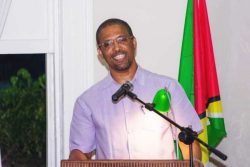Dear Editor,
In SN letters of May 10 and 22 respectively, Mr Hergash and Ms Bacchus have expressed what I may argue are some conflicting and contradictory perspectives with respect to the historic development of Indian-Guyanese education over the years (‘Indian-Guyanese have been keen on education since the 1920s and 1930s’; ‘The PNC’s policies made education accessible for all’).
Most if not all of the early primary schools in Guyana were denominational, and the costs for running these institutions were met by the respective churches. Later as education became more complex, expansive and expensive the churches sought financial aid from the state which assisted by providing salaries and equipment as well as the monitoring and oversight on education standards and the training of teachers. During PNC governance in the 1970s all schools were nationalized.
I received my primary education (1938-1947) at Maryville, Leguan, Canadian Mission School located in a largely Hindu community. During those years, neither Hindi nor any subject with specific Christian influences was ever taught in the school. However, a prayer was said every morning before classes started. Those Hindu children who attended the school but showed up irregularly for classes or were slow learners exhibited deep-seated social and economic problems, particularly poverty in their family rather than a lack of keenness for education because of Christian influences. Some Indian families at the time because of poverty were more concerned about survival rather than the education of their children for a better future, and therefore many Indian children were kept at home to assist in tending the farms, livestock and other chores to build up income and put roti on the table.
The Canadian Presbyterian Mission churches/schools were established in Guyana to administer primarily to the faithful who came from India, but their doors were open to all – no questions asked. Canadian missionaries were sent to Guyana and the Church provided funding to build schools and pay teachers for their services in communities where educational facilities and services were not available but should have been provided by the colonial government, which was receiving bountiful financial rewards from the sugar plantations and to which Ms Bacchus should have addressed much of her criticisms for its indifference or lack thereof to properly educate Indians and others in the society in those early years.
“He who pays the piper calls the tune,” and the Canadian Mission Church in its benevolence and pursuit of its mission chose teachers who shared its vision to provide an education which not only met its philosophy, but the educational standards set by the colonial government, having regard to the limited resources the church had at its disposal.
The church was indeed selective in the employment of its teachers, and since it was not a government agency which should offer employment to all and sundry, those in its employ had to satisfy certain criteria. It is worth noting, however, that as the Canadian Mission schools started receiving state aid, Hindu and Muslim teachers were recruited into all of them, although not in the numbers Ms Bacchus would have liked to see. Nevertheless, many of those teachers are still alive today and can attest to this.
The Canadian Mission primary schools and Berbice High School, together with the other denominational schools, have produced some of Guyana’s best and brightest – Hindus and Christians alike – and there is no evidence to suggest as claimed that these Christian managed schools were a deterrent to their educational advancement because of their lack of keenness for education, which was influenced by a Christian influenced curriculum. If indeed there was a lack of keenness for education by Indian-Guyanese, I would argue that it was not due to Christian influences in the education curriculum of the schools they attended, but other deep-seated social and economic factors. Those Indians who attended denominational schools should be eternally grateful for the opportunity to do so, as there were no alternative educational facilities available to them, particularly in the rural areas.
Finally, the Canadian Mission never resisted the state taking over its schools, as they became increasingly expensive to administer and therefore the church was happy to let them go. The problem with the state was not the schools, but the properties, since many of the buildings were dual purpose – school and church.
Contrary to Ms Bacchus’s claim, most Indian-Guyanese were always keen on education but unfortunately many of our indentured ancestors did not have the economic capacity to send their children for secondary education in the city, much less for higher education overseas. However, this handicap has been changing with time, as Indians jostle for better or worse to control the commanding heights of the Guyanese economy.
Yours faithfully,
Charles Sohan








